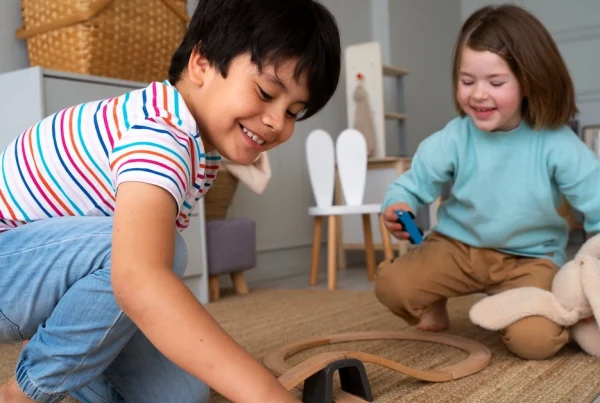Reading is a fundamental skill that serves as the gateway to knowledge, imagination, and lifelong learning. Through reading instruction, children not only learn to sound out letters and words but also gain the ability to read and understand complex literary works. Teaching reading is one of the most important responsibilities for parents and educators, as struggling readers may face challenges in other academic subjects.
However, to teach reading effectively requires dedication, patience, and consistent guidance. If you want to improve your child’s literacy skills, it’s essential to focus on developing their vocabulary and comprehension abilities. There are a variety of strategies parents can use to teach reading, helping children build strong literacy foundations that will serve them throughout life.
In reading instruction, the process of enhancing literacy is crucial. This article discusses strategies for boosting children’s literacy skills while nurturing their love for reading. Additionally, it provides a framework for parents to understand what they need to do in order to support their child’s reading journey effectively.
Why is Reading Important for Children’s Growth?

Before diving into how to teach reading, it’s essential to understand why reading is important for children’s overall growth. Learning to read and comprehend is a fundamental skill that affects every area of life.
Through reading, children not only develop literacy skills but also enhance their ability to analyze information, improve communication, and navigate the digital world effectively. In this section, we will explore why reading is one of the most important skills for kids and how it contributes to their lifelong learning journey.
1. Increasing Knowledge
Reading exposes children to a vast array of ideas, cultures, and concepts that help them develop critical thinking skills. According to Pearson, research shows that children who engage in daily reading perform better in assessments than their peers who do not. They also display a stronger vocabulary and comprehension skills, which allows them to absorb new information efficiently.
When children read books that introduce them to different historical events, science, and cultures, they begin to develop a broader perspective on the world. Whether they are reading fiction or non-fiction, each book helps them connect sounds and words together while expanding their intellectual horizons.
Encouraging your child to read a variety of books will strengthen their reading skills and comprehension and foster a lifelong love of learning.
2. Critical Thinking Skills
Developing critical thinking skills is an essential part of a child’s education, and reading plays a crucial role in this process. When children focus on the story, they analyze the motivations of characters, predict outcomes, and reflect on moral lessons.
Phonics instruction is also an essential component of learning to read. It helps children decode letters and sounds efficiently. By learning how to sound out new words and phrases, children become better equipped to tackle unfamiliar texts independently.
If you want to help your child improve their critical thinking abilities, encourage them to ask questions about the story they are reading. You might ask, “What do you think will happen next?” or “Why did the character make that decision?” These conversations enhance their analytical skills while reinforcing their reading comprehension.
3. Boosting Media Literacy
One of the most important skills children need today is media literacy. In an era dominated by digital content, children must learn how to critically evaluate online articles, advertisements, and news sources.
By teaching children to identify the right sources and analyze media critically, parents help them develop essential comprehension skills that go beyond books. They learn to sound out information, distinguish between facts and opinions, and recognize misleading content.
If you want your child to be well-equipped for the digital world, encourage them to read news articles alongside books. Discuss the text together to help them understand the words they are reading and identify biased or unreliable sources.
Developing media literacy and reading comprehension skills together ensures that children can read and analyze both printed and digital content effectively.
For more information on media literacy and how to develop them, check out our recently published article here!
Read more: Life Skills for Early Childhood Development that Every Parent Should Know
So, How to Teach Your Child to Read? Here are 7 Steps You Can Do!

As a parent, you want to ensure your child has the best foundation in reading. But how to teach reading effectively? It involves more than just decoding letters and sounds—it’s about building a love for books while providing the tools needed to read and understand text confidently. Here are seven steps you can take to help your child on their reading journey:
1. Introduce Phonemic Awareness Activities
Before children can sound out words, they need to recognize that words are made up of individual sounds called phonemes. Engaging in phonemic awareness activities is a great way to help children grasp this concept.
a. Learning Rhymes
Teaching rhyming words is a great way to help children recognize words that share similar sounds. For example, playing with words like “cat,” “hat,” and “mat” helps children understand word patterns and phonemic relationships.
b. Tongue Twisters
Tongue twisters are another fun and engaging way to practice phonemes. Repeating phrases like “She sells seashells by the seashore” encourages children to practice articulation and recognize sound patterns.
c. Mystery Bag Game
Splash Learn encourages children to sound out the word associated with objects. By matching objects with their starting letters and sounds, they develop a stronger connection between spoken and written words.
2. Explore Letter Recognition and Letter-Sound Correspondence
Once children recognize sounds, the next step is reading instruction that focuses on connecting letters and sounds to form words. Letter recognition is one of the most important foundational skills in literacy.
Using alphabet books, puzzles, and games can make this process engaging. Parents can introduce sight words—common words that children should recognize without needing to sound them out every time. These include high-frequency words like “the,” “and,” “is,” and “they.”
Read more: Nurturing Multilingualism: Several Ways on How to Teach English to Young Learners
3. Read Aloud Together Daily
Reading aloud is one of the most important activities for early literacy. By sharing stories daily, parents provide children with exposure to the words and sentence structures they will encounter in independent reading.
To enhance engagement, ask questions about the text they are reading. For example, “What do you think will happen next?” or “Why do you think the character made that choice?” This interactive approach encourages critical thinking and comprehension.
4. Create a Reading-Friendly Environment at Home
Creating a cozy and inviting space for reading at home is a great way to encourage reading habits. A dedicated reading nook with comfortable seating and access to the words they enjoy will make reading more enjoyable.
Additionally, incorporating books into daily routines—such as bedtime stories—ensures that reading becomes a natural part of their lives.
5. Explore Different Genres
Children benefit from exposure to various literary genres. Introducing books across different topics, including sight words, fiction, non-fiction, and poetry, enhances their literacy development.
Encouraging children to practice reading diverse texts allows them to explore new interests and ideas while improving their reading fluency.
6. Make Reading a Multisensory Experience
Adding sensory elements to reading is a great way to make learning enjoyable. Some effective techniques include:
- Acting out stories: Helps children understand narratives through movement.
- Creating themed snacks: Reinforces story themes in a playful way.
- Listening to audiobooks: Exposes children to the words in different formats, improving comprehension.
Read more: Fun and Practical Tips for Parents to Nurture Children’s Imagination
7. Utilize School Resources and Support Programs
If your child is struggling with reading, schools offer various support programs to improve their literacy skills. For instance, Sekolah Pelita Harapan (SPH) provides:
- Annual Book Week events to encourage reading.
- Extensive library resources to help children find books they love.
- Comprehensive Language and Literature Programs to promote children literacy and critical thinking.
By working alongside schools, parents can provide additional reinforcement to practice reading skills at home.
4 Common Mistakes When Teaching Kids to Read (and How to Avoid Them)

Teaching kids to read is an exciting journey, but it’s not always easy. Many parents and educators unknowingly make mistakes that slow down a child’s progress or make reading feel frustrating instead of fun. By recognizing these common pitfalls and using better strategies, you can help kids develop strong reading skills with confidence and enthusiasm.
1. Relying Too Much on Memorization
Many parents encourage kids to memorize words instead of teaching them how to decode new ones. When children rely only on memory, they struggle with unfamiliar words and miss out on essential phonics skills. Instead of focusing on memorization, teach kids how to break words into sounds and blend them together.
2. Moving Too Fast Through the Basics
Some parents rush through early reading skills, assuming kids will naturally pick up the rest. However, skipping key steps—like letter recognition, phonemic awareness, and blending—can create struggles later. To build a strong foundation, take time to reinforce each stage before introducing new concepts.
3. Correcting Mistakes Too Harshly
Some adults immediately correct every mistake kids make while reading, which can lower their confidence and make them afraid to try. Instead of pointing out errors harshly, encourage kids to self-correct. Ask guiding questions like, “Does that word make sense?” or “Try sounding it out again.” Praise their effort rather than focusing only on mistakes. When kids feel supported, they take more risks and learn from their errors without fear.
4. Ignoring Reading Comprehension
Many parents also focus on getting kids to read words fluently but forget to check if they understand what they’re reading. Kids might pronounce words correctly without grasping their meaning, which weakens their overall reading ability.
To improve comprehension, ask open-ended questions like, “What do you think will happen next?” or “Why do you think the character did that?” Encourage kids to summarize stories in their own words and connect them to real-life experiences. When children engage with stories, they develop deeper reading skills and stronger critical thinking.
In conclusion, developing a love for reading and strong literacy skills in children is a collaborative effort that involves both home and school environments. Implement the 7 strategies discussed in this article to lay a solid foundation for your children’s literacy journey while building a lifelong passion for reading. Remember, reading opens doors to endless possibilities and enriches every aspect of children’s lives.
For additional support and resources, SPH offers an extensive array of resources designed to aid children and parents in developing literacy skills. Explore our preschool in Jakarta to discover a wealth of tools and materials tailored to support early literacy development. To learn more about our student services and how we can assist you further, visit our website or reach out to us today.
By partnering with SPH and leveraging the available resources, you can empower your child to thrive academically and beyond, ensuring they embark on a fulfilling literacy and learning journey.









